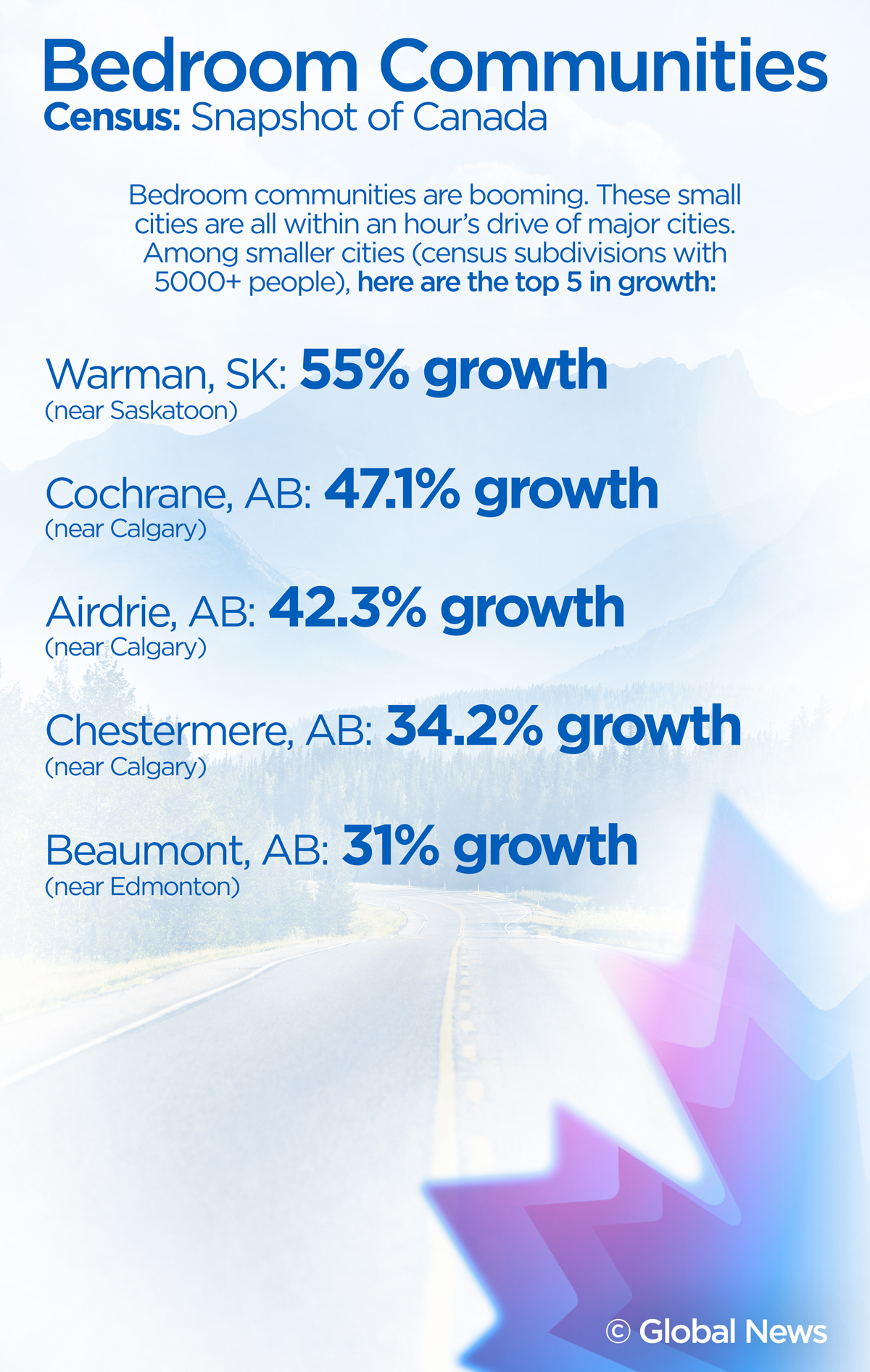Edmonton was the second-fastest growing city in the country over the past five years. But the growth isn’t confined just to the city.

Four communities in the capital region were in the list of top 15 municipalities with the highest population growth in Canada.
READ MORE: Canada’s population grew by 1.7 million between 2011 and 2016
Spruce Grove, Fort Saskatchewan, Leduc and Beaumont all saw significant growth. The four communities, all within a 30-minute commute of Edmonton, grew by between 4,000 and 7,800 people each in five years.
Beaumont saw a 31 per cent population growth. The town southeast of Edmonton went from 13,284 to 17,396 people. (Increase of 4,112.) Beaumont was one of the top five fastest-growing bedroom communities in Canada.
West of Edmonton, Spruce Grove grew 30 per cent, from a population of 26,171 to 34,066. (Incease of 7,895.)
To the northeast, Fort Saskatchewan saw growth of 27 per cent, as the population went from 19,051 to 24,149. (Increase of 5,098.)
Just south on the QEII, Leduc’s population increased 23 per cent, from 24,304 to 29,993. (Increase of 5,689.)

Get breaking National news
Watch below: New federal census data show the Edmonton region’s population jumped nearly 14 per cent from 2011 to 2016. Vinesh Pratap takes a closer look.

INTERACTIVE MAPS: How has your city grown? Find your neighbourhood
Statistics Canada released the first batch of numbers from the 2016 census on Wednesday and the population of what the government agency refers to as the census metropolitan area of Edmonton increased by 13.9 per cent since the last census in 2011.
The area includes all the city’s outlying communities, stretching from Evansburg in the west, to past Sherwood Park in the east, and from Legal and Redwater in the north to northern edge of Pigeon Lake in the south.
When the 2016 census was taken last May 10, the population of the Edmonton region was 1.32 million, compared with 1.15 million from the 2011 census. The population of the actual city of Edmonton grew by over 120,000 people, from 812,201 to 932,546.
Growth primarily happened on the outer edges of the city by the Anthony Henday ring road, although there was also growth in downtown Edmonton and in the city’s north side Griesbach area, where a former military base was converted into a residential neighbourhood.
READ MORE: New Edmonton neighbourhoods will cost $1.4 billion more than they will bring in
The area’s growth rate was above the national growth rate of five per cent, while the population of Alberta increased by 11.6 per cent.
When it comes to population growth, three factors are considered: immigration, interprovincial migration and through natural increase — having more births than deaths.
“Alberta is a very interesting case because all three components of a province’s growth are adding up to high growth in Alberta,” said Laurent Martel, director of the demography division at Statistics Canada.
All Prairie provinces have higher fertility rates than the national average, Martel said, and Albertans are also a bit younger on average, meaning fewer deaths.
READ MORE: Census 2016: Fertility takes back seat to immigration in Canada’s growth
Manitoba grew by 5.8 per cent, which Statistics Canada attributes to international migration. Saskatchewan grew by 6.3 per cent. This is the first time since the Prairies joined Confederation that the three Prairie provinces had the highest population growth rates in Canada, said Martel.
Alberta is special though, said Martel.
“This is the only province where all three phenomena are contributing on the same level.”
READ MORE: City looking at new ways to fast-track infill in older areas of Edmonton
Census metropolitan areas do not conform to established municipal boundaries. Statistics Canada defines them as a metropolitan area with a population of at least 100,000, where the urban core of that area has at least 50,000 people.
Commuting patterns and other factors are used in determining these census metropolitan areas. Looking at metropolitan areas this way takes in to account the growing impact of suburban areas on Canada’s largest cities.
Canada’s population on Census Day was 35,151,728, Statistics Canada reported.
— With files from The Canadian Press, and Leslie Young, Global News









Comments